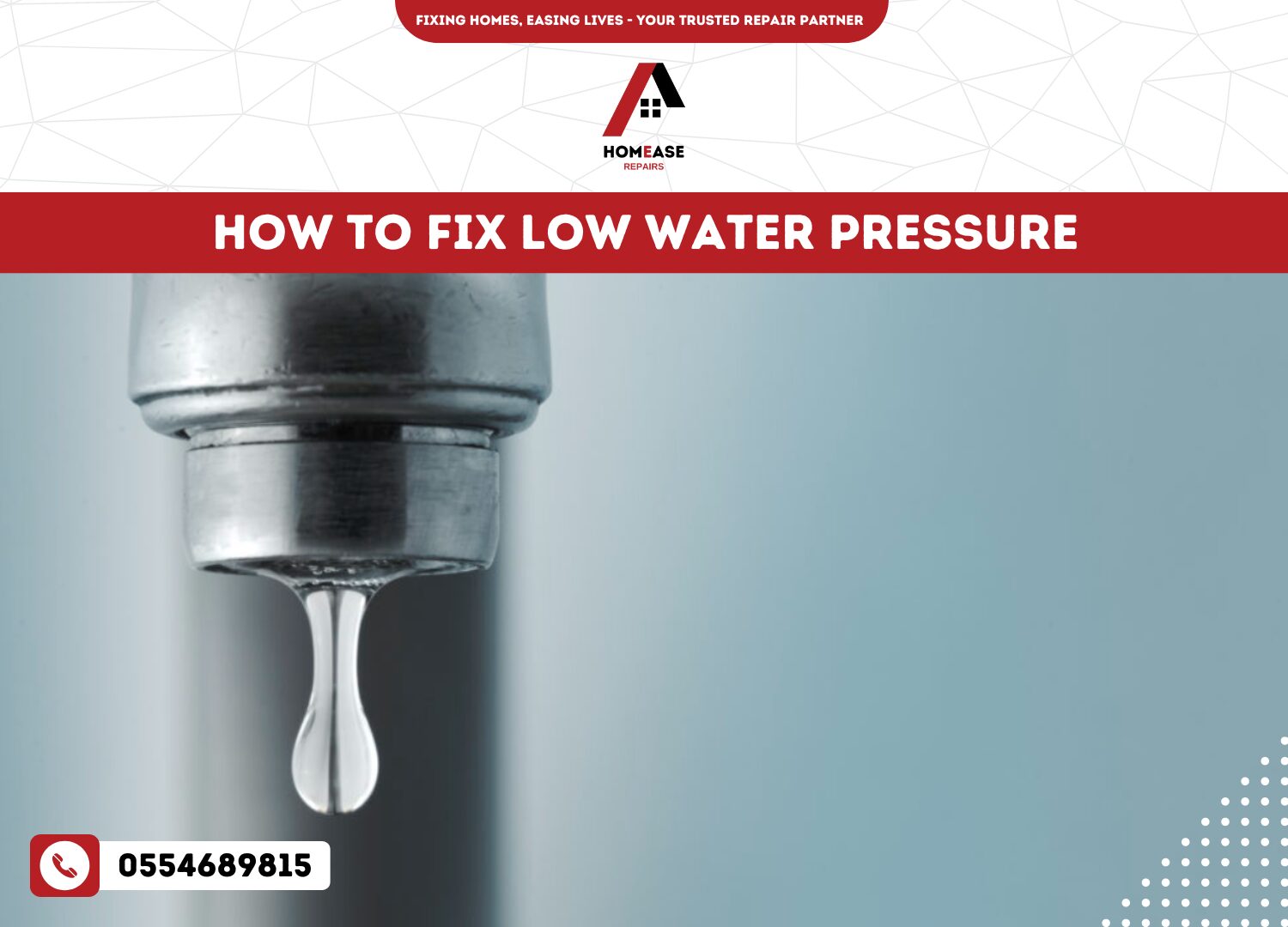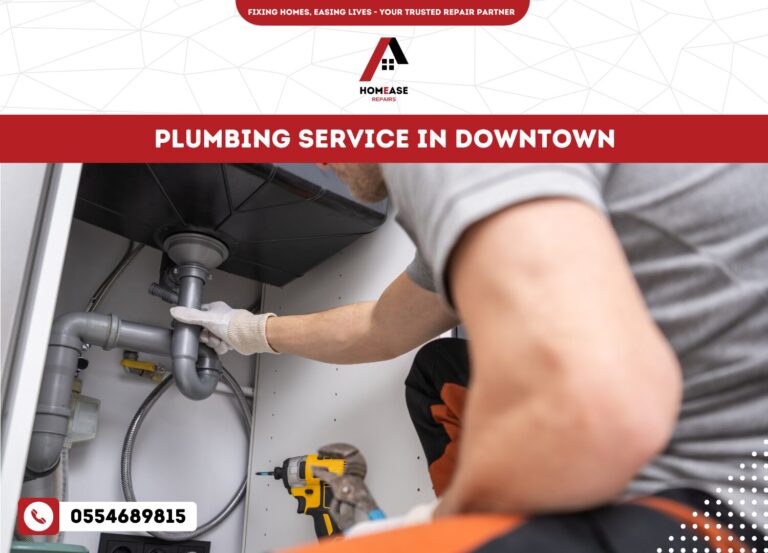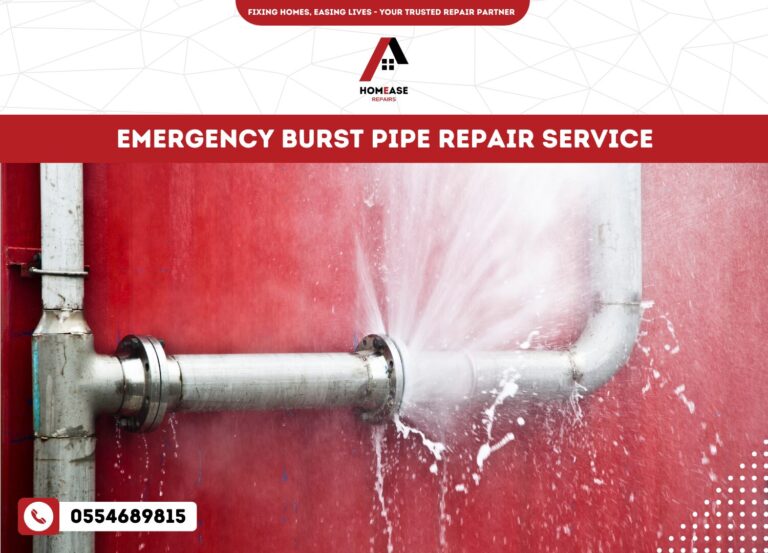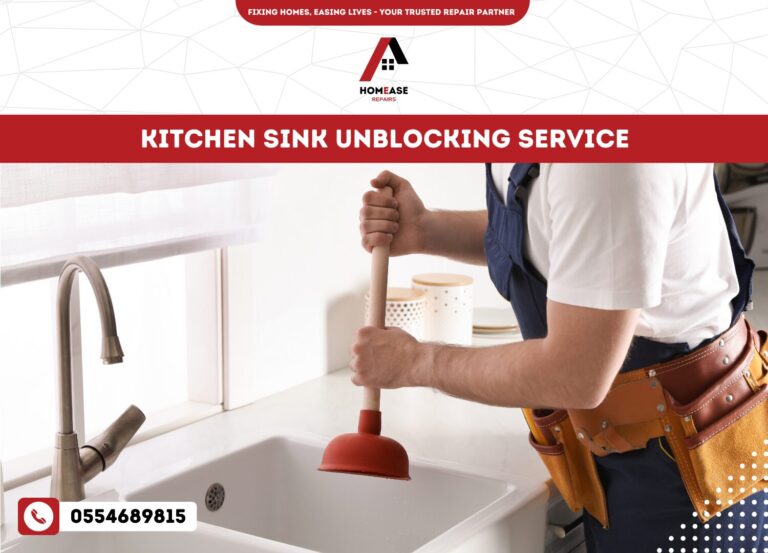Call Now: 0554689815
How to Fix Low Water Pressure
Low water pressure can be frustrating, especially when it disrupts your daily routines like showering, washing dishes, or watering your garden. If you’ve been wondering “Why am I facing low water pressure?”, you’re not alone. This common issue can have several causes, but with the right approach, you can identify and fix it effectively.
In this comprehensive guide, we’ll walk you through:
- The common causes of low water pressure.
- Step-by-step instructions on how to fix low water pressure.
- Pro tips on how to increase water pressure in a house for a consistent flow.

Table of Contents
ToggleWhy Am I Facing Low Water Pressure?
Understanding the root cause is the first step in solving the problem. Here are some common reasons why you might be dealing with weak water pressure:
1. Blocked or Clogged Pipes
Over time, mineral deposits, dirt, and debris can build up in your plumbing system, restricting water flow.
2. Faulty Fixtures
A clogged faucet aerator or showerhead can significantly reduce water pressure in specific areas.
3. Municipal Supply Issues
Sometimes, the problem isn’t within your home but with the local water supply. Nearby construction, repairs, or high demand can affect pressure.
4. Leaks in the Plumbing System
Even a small leak can reduce water pressure by diverting water away from its intended destination.
5. Incorrectly Set Pressure Regulator
If your home has a pressure regulator, it might be set too low, limiting water flow.
6. Outdated or Corroded Pipes
Old plumbing systems made from materials like galvanized steel can corrode over time, restricting water flow and reducing pressure.
Step-by-Step Guide on How to Fix Low Water Pressure
1. Check Your Water Fixtures
The issue might be as simple as a clogged fixture.
- Inspect Aerators and Showerheads: Remove them and check for mineral buildup.
- Clean or Replace: Soak aerators and showerheads in vinegar overnight to dissolve deposits. If cleaning doesn’t work, consider replacing them.
2. Look for Leaks
Leaks can silently steal your water pressure.
- Inspect Visible Pipes: Look for signs of dampness, drips, or puddles under sinks and around fixtures.
- Check Your Water Meter: Turn off all water in the house and monitor the meter. If it continues to move, there’s likely a leak.
- Fix or Call a Professional: Small leaks can often be patched up with plumbing tape, but larger ones might require expert help.
3. Test the Pressure Regulator
- Locate the Regulator: It’s usually near the main water shut-off valve.
- Adjust It: Use a wrench to increase the pressure. Be cautious not to set it too high, as this can strain your pipes.
4. Flush Your Plumbing System
Sediment and debris in pipes can reduce water flow.
- Turn Off the Main Supply: Close the main valve and open all faucets to drain the system.
- Flush the System: Turn the water back on to flush out deposits.
5. Investigate the Municipal Supply
- Ask Your Neighbors: If they’re experiencing similar issues, the problem may be with the local water supply.
- Contact Your Water Supplier: They can provide updates on any disruptions or repairs in your area.
6. Upgrade Your Pipes
Old, corroded pipes might be the culprit.
- Consult a Plumber: Replacing outdated plumbing can be a significant but worthwhile investment.
7. Install a Water Pressure Booster
If all else fails, a booster pump can enhance the water flow in your home.
- Choose the Right Pump: Look for a system compatible with your plumbing and household needs.
- Professional Installation: For safety and efficiency, hire a professional to install the pump.
How to Increase Water Pressure Naturally
Sometimes, simple changes can make a big difference. Here’s how to boost water pressure without extensive repairs:
1. Adjust Usage Times
Avoid high-demand times like mornings and evenings when water usage spikes in your neighborhood.
2. Remove Obstructions
Keep all pipes and fixtures clean and free of debris.
3. Add Water Softener
If you live in an area with hard water, a water softener can reduce mineral buildup that restricts flow.

How to Increase Water Pressure in a House: Expert Tips
For consistent water pressure throughout your home, consider these strategies:
- Ensure Proper Pipe Sizing: If your pipes are too narrow, they may restrict water flow.
- Replace Faulty Valves: Check for partially closed valves in your plumbing system.
- Upgrade Your Plumbing: Modern materials like PEX or copper offer better water flow.
Helpful Tools and Products to Consider
- Pipe Descaler: Reduces mineral buildup in pipes.
- Pressure Gauge: Measures your water pressure for accurate adjustments.
- Smart Showerheads: Designed to optimize pressure while conserving water.
FAQs on Low Water Pressure
Q: Can a clogged filter in appliances affect water pressure?
A: Yes! Clean or replace filters in dishwashers and washing machines regularly to maintain flow.
Q: What’s the ideal water pressure for a house?
A: Typically, residential water pressure should be between 40-60 psi.
Q: Do booster pumps increase energy bills significantly?
A: While they consume some energy, modern pumps are efficient and shouldn’t drastically affect your bills.
Dealing with low water pressure can be a hassle, but with the right approach, you can restore a strong, steady flow to your home. From addressing clogged fixtures to upgrading outdated plumbing, this guide provides actionable solutions tailored to your needs.
Still wondering “How to fix low water pressure”? Follow these steps, and you’ll enjoy a smoother, stress-free water system in no time.
For more personalized advice, don’t hesitate to consult a plumbing professional!
Our other group of services:



